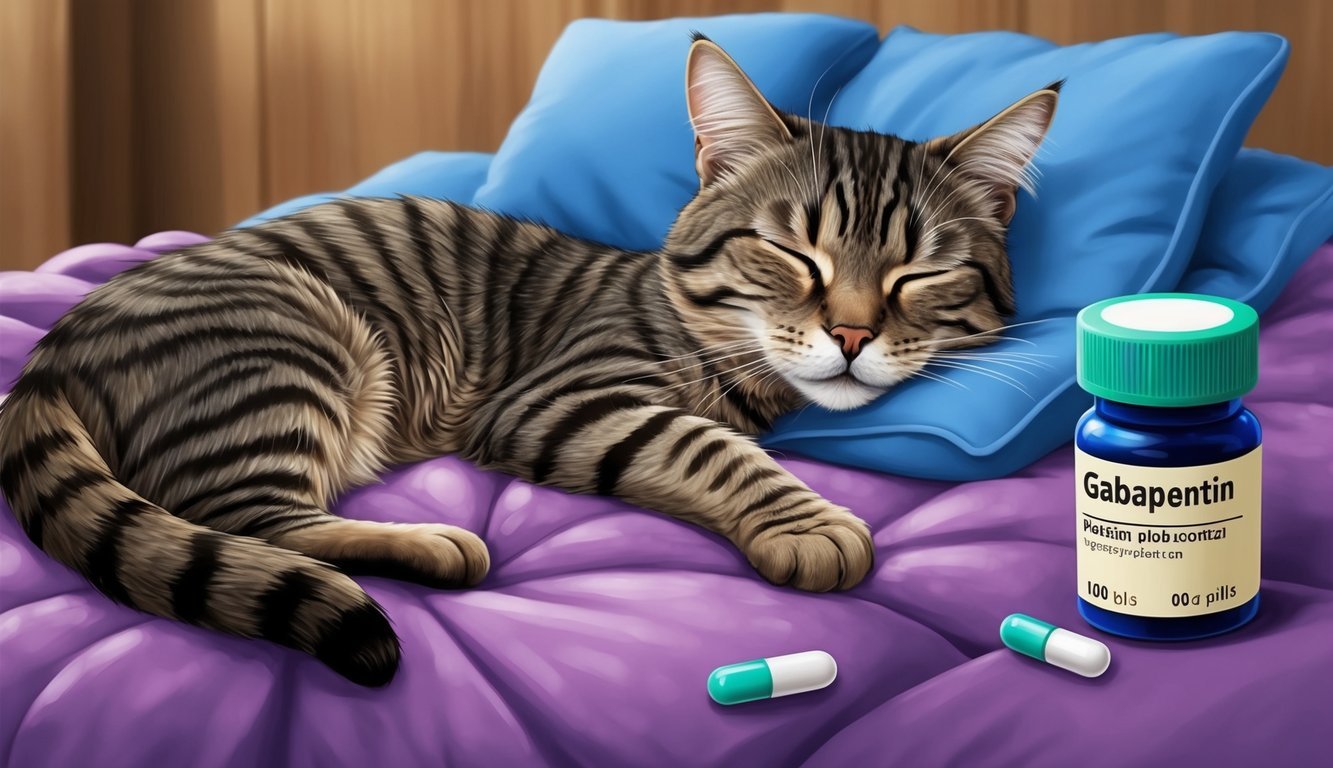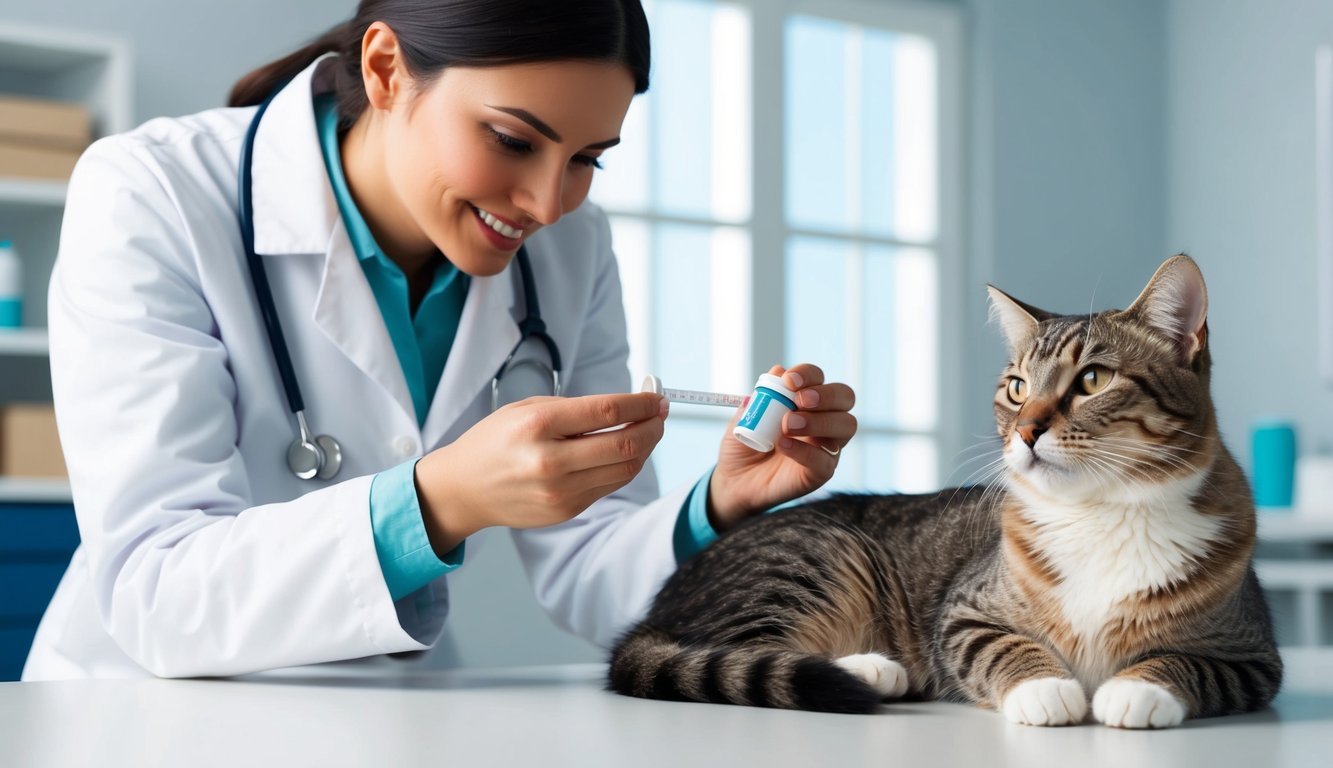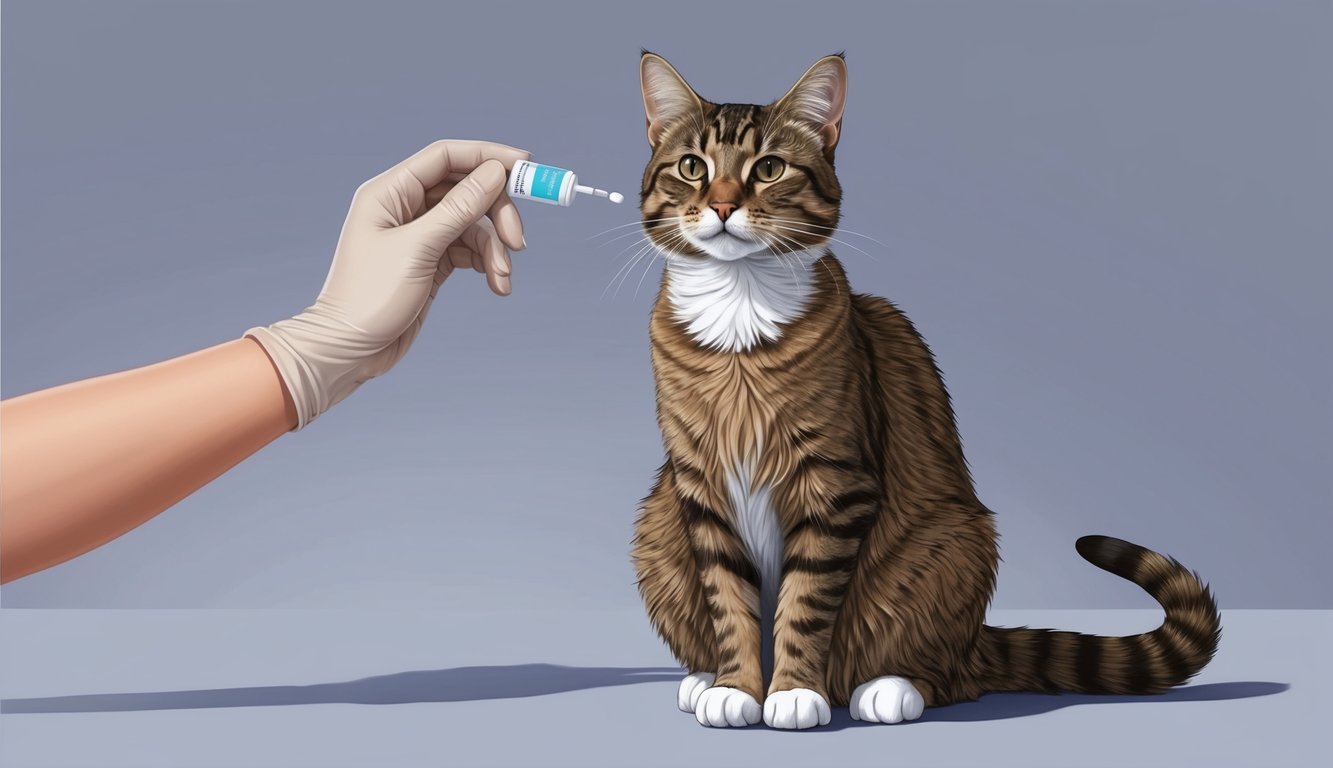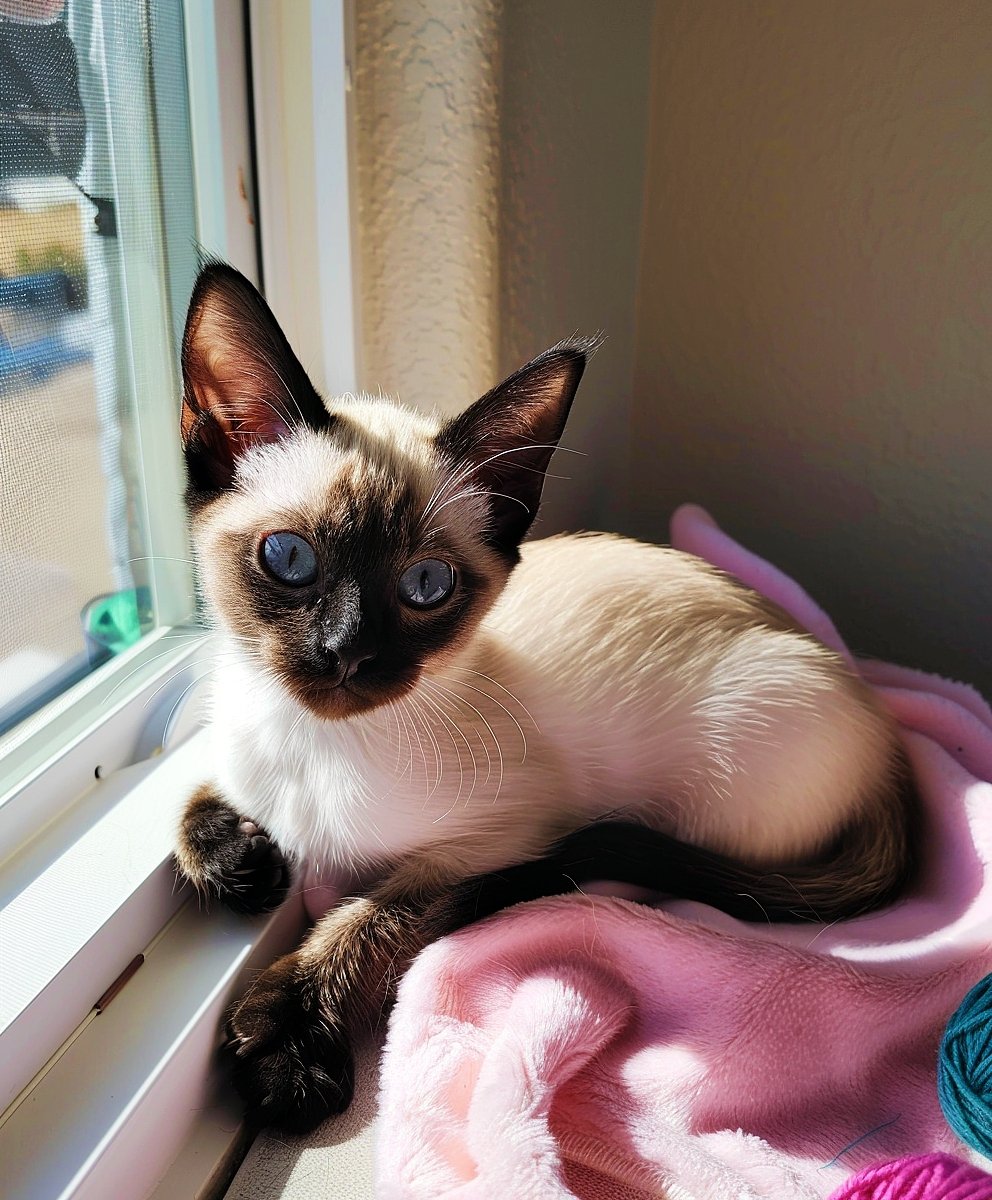Gabapentin has become a commonly recommended medication for managing various conditions in cats, from chronic pain to anxiety and seizures. This drug, originally designed for humans, can provide significant relief for your feline friend when used correctly.
Understanding its uses, dosages, and potential side effects can empower you to make informed decisions about your cat’s health.
You might be wondering how gabapentin works and when it should be used.
Each cat is unique, and finding the right approach to treatment can make all the difference in maintaining their quality of life.
As you explore the various aspects of gabapentin, you’ll gain insights that are essential for responsible pet ownership and effective veterinary care.
Whether you have a cat struggling with pain or one that experiences anxiety during travel or vet visits, knowing about gabapentin can help you feel more confident in managing your pet’s health.
By learning the essentials regarding this medication, you’re taking a vital step toward ensuring your furry companion receives the best possible care.
Key Takeaways
- Gabapentin can effectively treat pain, anxiety, and seizures in cats.
- Proper dosage and monitoring are crucial to avoid potential side effects.
- Understanding the medication helps you make informed decisions about your cat’s treatment.
Overview of Gabapentin in Feline Medicine
Gabapentin is increasingly recognized as a valuable medication in veterinary medicine, especially for managing specific conditions in cats.
It serves various purposes, from treating neuropathic pain to functioning as an anticonvulsant, making it a versatile choice for many feline patients.
What Is Gabapentin?
Gabapentin is a medication originally developed for humans but has found significant use in feline medicine.
It is primarily prescribed for managing chronic pain, especially neuropathic pain, and for controlling seizures in cats.
Your veterinarian may recommend gabapentin for different situations, including after surgery or during stressful events like vet visits.
Administered orally, gabapentin is available in capsules, tablets, and liquid formulations.
Dosage varies based on your cat’s weight and specific medical needs.
It’s often given a few hours before stressful situations, like vet trips, to help reduce anxiety and provide a calming effect.
Gabapentin’s Mechanism of Action
The mechanism of action of gabapentin is crucial to understanding its benefits.
Gabapentin works by inhibiting certain neurotransmitters in the brain that contribute to pain transmission.
It binds to specific calcium channels in nerve cells, reducing the release of excitatory neurotransmitters.
This action helps in alleviating both chronic and neuropathic pain, offering significant relief for cats suffering from conditions like arthritis or neuropathies.
Additionally, its anticonvulsant properties can stabilize neuronal activity, making it useful for cats with epilepsy or seizures.
By targeting both pain and seizures, gabapentin plays a crucial role in improving your cat’s quality of life.
Regular veterinary check-ups are essential to monitor its effectiveness and adjust dosages as needed.
Veterinary Uses of Gabapentin for Cats
Gabapentin plays an important role in veterinary medicine, particularly in managing feline health.
This medication can be utilized for various conditions, including chronic pain, seizures, and anxiety relief.
Managing Chronic Pain
Gabapentin is commonly prescribed for managing chronic pain in cats, particularly nerve-related pain.
If your cat has conditions like arthritis or has recently undergone surgery, gabapentin may be an effective part of their treatment plan.
Dosages typically range from 50 mg to 100 mg per cat, depending on individual needs.
It’s often combined with other pain medications to enhance effectiveness.
Veterinarians report positive outcomes, noting that gabapentin can significantly improve your cat’s quality of life by reducing pain and discomfort.
Treatment for Seizures and Epilepsy
For cats suffering from seizures or refractory idiopathic epilepsy, gabapentin serves as an additional treatment option.
Many veterinarians may recommend it as part of a broader approach to manage seizures.
While it is not the first-line treatment, it can be beneficial when combined with other anticonvulsants, especially in cases where traditional medications are insufficient.
The dosage will vary between individuals.
It’s crucial to monitor your cat’s response and adjust as necessary under veterinary guidance.
Sedation and Anxiety Relief
Gabapentin can also be effective for sedating anxious cats or those stressed by visits to the vet.
By calming them down, it can make trips more manageable for both you and your pet.
Administering gabapentin a couple of hours before an event, like a vet visit or travel, is usually recommended.
The desired effects often peak around 2-3 hours after giving the medication.
Veterinarians have observed that this approach can lead to friendlier and more docile behavior in cats during stressful situations.
Proper Gabapentin Dosage for Cats

When it comes to administering gabapentin to your cat, determining the right dosage is crucial.
The appropriate amount varies based on your cat’s specific needs and conditions.
Monitoring their response to the medication is also essential for ensuring safety and effectiveness.
Determining the Right Dosage
The typical gabapentin dosage for cats varies depending on the condition being treated.
For managing pain, vets often recommend 1.25 to 2 mg/kg every 12 hours.
If your cat is experiencing seizures, the dosage increases to 2-5 mg/lb or 5-10 mg/kg, administered every 8 to 12 hours.
For sedation, the dosage is generally between 40-70 mg for smaller or older cats and 75-90 mg for adults.
Always consult your veterinarian to calculate the proper dosage based on your cat’s weight and health status.
Avoid exceeding the limits of 50-100 mg per cat for safety.
Monitoring and Adjusting Treatment
Once you start your cat on gabapentin, keep an eye on their response.
Watch for side effects such as lethargy, incoordination, or gastrointestinal issues.
If you notice any concerning signs, contact your veterinarian promptly.
Regular check-ins will help determine if adjustments are necessary.
Your vet may increase or decrease the dosage based on how well your cat reacts to the medication.
Open communication is vital for a successful treatment plan.
Always follow your vet’s guidance for the safest and most effective use of gabapentin.
Understanding Potential Side Effects

When considering gabapentin for your cat, it’s crucial to be aware of the potential side effects.
While many cats tolerate it well, some adverse reactions can occur, warranting attention and management.
Common Side Effects
The most frequently observed side effects of gabapentin in cats include drowsiness, sedation, and unsteadiness.
You might notice your cat becoming more lethargic than usual or less interested in playing.
Here’s a quick list of common side effects:
- Sedation: Cats may seem unusually sleepy.
- Lethargy: A noticeable decrease in energy and activity.
- Incoordination: Cats might walk less steadily or appear wobbly.
These reactions are generally mild and temporary.
However, if they persist or escalate, it’s essential to consult your veterinarian for advice.
Adverse Reactions and Overdose
In rare cases, more serious adverse reactions can occur, which can be life-threatening.
Symptoms of an overdose may include extreme lethargy, continued vomiting, or significant incoordination.
If you suspect an overdose:
- Contact your veterinarian immediately.
- Be prepared to provide details about dosage and timing.
Monitoring your cat closely after starting gabapentin will help you spot these reactions early.
Recognizing the signs and responding promptly can prevent more serious issues.
Interactions with Other Drugs
Gabapentin may interact with other medications, so it’s vital to inform your vet of all drugs your cat is currently taking.
Certain sedatives or anti-anxiety medications can amplify gabapentin’s sedative effects.
Key points to remember about drug interactions:
- Be vigilant for increased sedation if combined with other sedatives.
- Schedule regular check-ins with your vet if your cat is on multiple medications.
Being aware of how gabapentin works with other treatments can help keep your cat safe and healthy during its use.
Precautions and Considerations for Feline Patients

When considering gabapentin for your cat, it’s vital to be aware of specific precautions that ensure your feline’s safety and well-being.
Proper administration techniques, attention to underlying health conditions like kidney or liver disease, and recognizing how your cat’s behavior and environment can impact medication effectiveness are critical.
Administering Gabapentin Capsules
Giving gabapentin to your cat requires careful attention to the dosage.
Always measure the prescribed dose accurately, as incorrect amounts can lead to severe side effects or inadequate pain relief.
If your cat resists taking capsules, consider alternative methods.
You can conceal the capsule in a small amount of food or use a pill pocket treat designed for this purpose.
Be mindful of your cat’s behavioral cues during administration, as stress can affect how they react to the medication.
Tip: Follow your veterinarian’s guidelines on timing and dosage frequency to maximize effectiveness and minimize risks.
Gabapentin for Cats with Kidney or Liver Disease
If your cat has pre-existing kidney or liver disease, it’s crucial to consult your veterinarian before starting gabapentin.
These health issues can affect how the medication is processed in your cat’s body.
In such cases, your vet may recommend a lower dose or a different pain management strategy.
Monitoring is essential since compromised organs can impact medication efficacy and safety.
Regular follow-ups and blood tests can help ensure your cat remains stable while on gabapentin.
Key Point: Always disclose any health issues during veterinary consultations.
Behavioral and Environmental Factors
Your cat’s environment and behavior can influence how well gabapentin works.
If your feline experiences anxiety or stress due to environmental changes, this can affect their response to the medication.
Creating a calm and familiar space can help.
Consider using pheromone diffusers or calming music to alleviate stress.
Monitor any behavioral changes after administering gabapentin.
Some cats may become more lethargic or less coordinated.
Note: Observing your cat in their environment can help you determine the best approach to medication and what additional measures you may need to implement for their comfort.
Gabapentin as Adjunctive Therapy

Gabapentin is increasingly recognized for its role in managing pain alongside other medications.
This can enhance overall pain relief while potentially minimizing the side effects associated with higher doses of traditional painkillers.
Combining with Other Pain Medications
When using gabapentin for cats, it is often administered alongside other pain medications such as morphine or hydrocodone.
This combination can provide a more comprehensive pain management strategy.
- Synergistic Effects: Gabapentin works differently than opioids, allowing for effective pain control without solely relying on stronger narcotics.
- Dosing Considerations: The dosage of gabapentin should be tailored based on the specific needs of your cat as well as the other medications involved in their treatment.
It’s essential to consult your veterinarian to determine the appropriate dosages and combinations to ensure your cat receives effective pain relief with reduced risks.
Using with Antacids and Dietary Considerations
Diet can also play a critical role in the effectiveness of gabapentin.
Antacids, particularly those containing aluminum or magnesium, may interfere with gabapentin’s absorption.
- Timing Matters: Give gabapentin at least two hours apart from antacid administration to maximize its effectiveness.
- Food Impact: While gabapentin can be given with or without food, consistency is crucial. If the medication is given with food, it should be done the same way each time for optimal absorption.
By considering these dietary factors, you can help ensure your cat gets the full benefits of gabapentin while undergoing pain management.
Practical Tips for Cat Owners
You can easily administer gabapentin to your cat with the right techniques.
Staying vigilant and monitoring how your cat responds to the medication is essential.
Knowing when to seek veterinary advice can further ensure your pet’s safety and well-being.
Administering Medication to Your Cat
Giving your cat gabapentin can be done effectively with a few strategies.
First, always follow the dosage prescribed by your veterinarian.
Use a calibrated syringe or pill splitter for accuracy.
Cats may be sensitive to taste, so hiding the medication in a small amount of wet food or using a pill pocket can make administration easier.
If your cat is reluctant, gently wrap them in a towel to restrict movement, keeping them calm.
Remember to praise and reward your cat afterward to create a positive experience.
If you’re using liquid gabapentin, aim for the side of the mouth to minimize spitting it out.
Always observe your cat for any signs of vomiting or discomfort after administering the medication.
Monitoring Your Pet’s Response
After giving gabapentin, it’s important to monitor your cat closely.
Pay attention to changes in behavior, appetite, and energy levels.
Signs of side effects include lethargy, vomiting, or diarrhea.
If you notice any of these symptoms, take action promptly.
Keep a journal to track your cat’s reaction to the medication.
This can be useful for your next veterinary visit.
If your cat seems excessively sedated or unwilling to eat, contact your veterinarian for advice on adjustments.
Remember, every cat responds differently, so your observations are key to their health.
When to Contact the Veterinarian
It’s crucial to know when to reach out to your veterinarian.
If your cat experiences severe vomiting, diarrhea, or a sudden change in behavior, it could signal an adverse reaction to gabapentin.
Additionally, if your cat exhibits signs of extreme sedation or unresponsiveness, this warrants immediate veterinary attention.
If you have concerns about the medication’s effectiveness, such as inadequate pain relief, don’t hesitate to discuss it with your vet.
Regular check-ins during vet visits will help tailor the treatment plan, ensuring your cat receives the best possible care.
Frequently Asked Questions
When considering gabapentin for your cat, you might have several questions about its dosage, side effects, and effectiveness.
Here are some common queries to help you understand more about this medication.
What dosage of gabapentin is typically safe for cats?
The safe dosage of gabapentin for cats generally ranges from 5 to 10 mg per kilogram of body weight.
For most situations, the total amount usually does not exceed 50 to 100 mg per cat.
Your veterinarian will tailor this to your cat’s specific needs.
What side effects might my cat experience when taking gabapentin?
Common side effects of gabapentin include sedation and incoordination.
Some cats may also experience vomiting or lethargy.
It’s important to monitor your cat after giving the medication to note any adverse reactions.
How long does the effect of gabapentin last in felines?
The effects of gabapentin typically last between 8 and 12 hours.
This duration can vary based on the individual cat and the condition being treated.
Always consult your veterinarian for specific guidance related to your pet’s situation.
Can gabapentin cause sedation in cats, and if so, for how long?
Yes, gabapentin can cause sedation in cats.
The sedative effects usually last about 8 to 12 hours after administration.
Keep in mind that sensitivity can vary by individual, so your cat may react differently.
What are the signs that a cat may be on too much gabapentin?
Signs your cat may be receiving too much gabapentin include excessive drowsiness, unsteady movements, or vomiting.
If you observe these symptoms, it’s important to contact your veterinarian promptly for advice.
How does gabapentin help cats with anxiety?
Gabapentin can manage anxiety in cats, especially during stressful situations.
It often helps by stabilizing mood and providing a calming effect. This article has more information on how cats help humans heal.
Always follow your veterinarian’s instructions for the best results.

